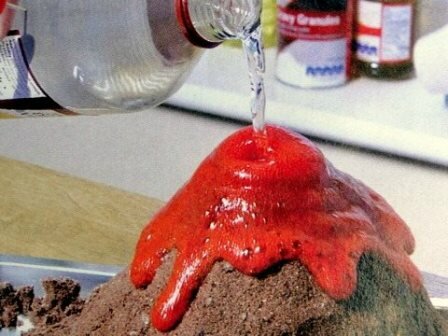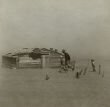These following facts about volcanic eruptions should be really interesting for you to read. During a volcanic eruption, lava, tephra (ash, lapilli, volcanic bombs and blocks) and various gases are expelled from a volcanic vent or fissure. Several types of volcanic eruptions have been distinguished by volcanologists. These are often named volcanoes where that type of behavior has been observed. Some volcanoes may exhibit only one characteristic type of eruption during a period of activity, while others may display an entire sequence of types all in one eruptive series. To get to know more about this, here are some other facts about volcanic eruptions you might like to know.
Facts about volcanic eruptions 1: Eruption
In an eruption, gases and rock shoot up through the opening and spill over or fill the air with lava fragments. Eruptions can cause lava flows, hot ash flows, mudslides, avalanches, falling ash and floods.
Facts about volcanic eruptions 2: Ashes
Fresh volcanic ash, made of pulverized rock, can be harsh, acidic, gritty, glassy and smelly. The ash can cause damage to the lungs of older people, babies and people with respiratory problems.
Facts about volcanic eruptions 3: Volcanic Lighting
Volcanic lightning occurs mostly within the cloud of ash during an eruption, and is created by the friction of the ash rushing to the surface. Roughly 200 accounts of this lightning have been witnessed live.
Facts about volcanic eruptions 4: Original Volcanic
More than 80% of the earth’s surface is volcanic in origin. The sea floor and some mountains were formed by countless volcanic eruptions. Gaseous emissions from volcano formed the earth’s atmosphere.
Facts about volcanic eruptions 5: Active Volcanoes in the U.S
Active volcanoes in the U.S. are found mainly in Hawaii, Alaska, California, Oregon and Washington, but the greatest chance of eruptions near areas where many people live is in Hawaii and Alaska.
Facts about volcanic eruptions 6: Sound of Eruption
The sound of an eruption volcano can be quiet and hissing or explosive and booming. The loud cracks travel hundreds of miles and do the most damage, including hearing loss and broken glass.
Facts about volcanic eruptions 7: Deadliest Eruption
The deadliest eruptions have occurred in Indonesia, with tens of thousands of lives lost to starvation, tsunami (as a result of the eruption), ash flows, and mudflows.
Facts about volcanic eruptions 8: Magmatic Eruptions
Magmatic eruptions produce juvenile clasts during explosive decompression from gas release. They range in intensity from the relatively small lava fountains on Hawaii to catastrophic Ultra Plinian eruption columns more than 30 km high, bigger than the AD 79 eruption that burried Pompeii.
Facts about volcanic eruptions 9: Vulcanian Eruptions
Vulcanian eruptions are a type of volcanic eruption, named after the volcano “Vulcano”, which also gives its name to the word “volcano”. It was named so following Giuseppe Mercalli’s observations of its 1888-1890 eruptions. In Vulcanian eruptions, highly viscous magma magma within the volcano make it difficult for vesiculate gases.
Facts about volcanic eruptions 10: 20 Active Volcanoes Erupting
There are at least 20 active volcanoes erupting. Between 50-70 volcanoes erupted last year, and 160 went off in the last decade. Geologists estimate that 1,300 erupted in the last 10,000 years. Three quarters of all eruptions happen underneath the ocean, and most are actively erupting and no geologist knows about it at all.
Hope you would find those volcanic eruptions facts really interesting and useful for your additional reading.










 www.PortlandPayday.Loans
www.PortlandPayday.Loans